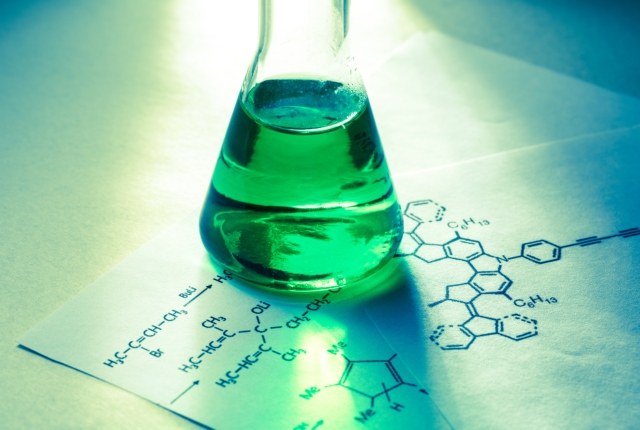An international research group coordinated by Paolo Melchiorre, professor at the Department of Industrial Chemistry ‘Toso Montanari’ of the University of Bologna, devised a new artificial enzyme able to use visible light to trigger complex chemical reactions. The results of the study – published on Nature – represent a significant step forward towards a future in which light and enzymes will collaborate to produce precious molecules in a more efficient and sustainable way.
"Our study introduces an innovative approach to the synthesis of chiral molecules – compounds with a well-defined three-dimensional structure – by combining photochemistry, biocatalysis and organocatalysis", explains Professor Melchiorre. "When combined, these three powerful strategies allow for the creation of sustainable methods for producing complex chiral molecules, which are hard to obtain with traditional techniques".
The researchers were inspired by certain natural enzymes – known as photodecarboxylases – that use light to trigger chemical transformations. By studying their behaviour, the researchers managed to develop an advanced version of such enzymes, one able to produce chiral molecules at high precision levels.
"The artificial enzyme we’ve engineered can use visible light to activate specific chemical intermediates, especially chiral carboxylic acids, producing radicals that undergo stereospecific couplings", highlights Melchiorre. "This process allows for precisely producing molecules with two stereospecific centres in a single step, thus overcoming a main challenge in radical chemistry".
The new enzyme developed by this research group possesses better catalytic abilities than the natural enzyme by which it was inspired. This result opens new possibilities for sustainably synthesising complex compounds, with potential applications in pharmaceutical chemistry and advanced material production.
"The strategy we developed represents a new, powerful tool for chiral molecules synthesis, with potential applications in pharmaceutical and other fields where stereochemistry is fundamental", states Melchiorre. "The ability to achieve such control using light and engineered enzymes represents a significant advancement both in synthetic chemistry and biocatalysis".
Professor Melchiorre is conducting this line of research through a project called PHOTOZYME, financed by the European Research Council (ERC) with an Advanced Grant worth 3 million euros. By combining three modern chemical transformation strategies – biocatalysis, photochemistry and directed evolution – the project aims at laying the foundations for sustainable molecular synthesis, from which new drugs could be developed.
The study was published in Nature under the title ‘Stereospecific Radical Coupling with a Non-Natural Photodecarboxylase’. Together with Paolo Melchiorre, professor at the Department of Industrial Chemistry ‘Toso Montanari’ of the University of Bologna, other scholars participated in the project: Vasilis Tseliou, Laura Kqiku, Martin Berger and Florian Schiel from the ICIQ – Institut Català d'Investigació Química (Spain), and Hangyu Zhou and Gerrit J. Poelarends from the University of Groningen (Netherlands).

